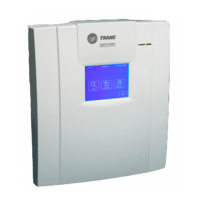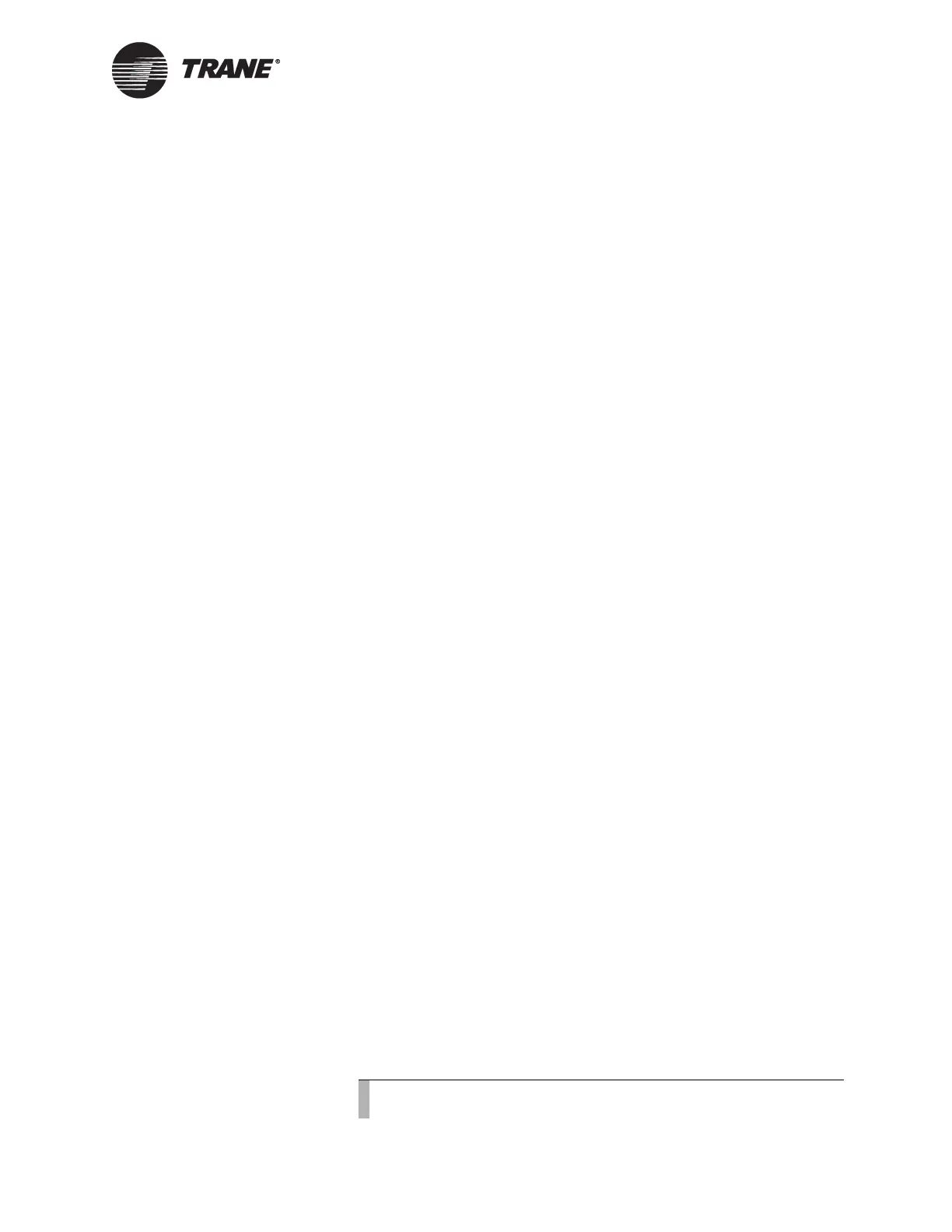Thermostat Control Module (TCM) Interface
BMTW-SVN01F-EN 109
Thermostat Control Module (TCM)
Interface
Description
Thermostat Control Modules (TCMs) can provide generic inputs and out-
puts that are controlled directly by Tracer Summit. TCMs can also func-
tion as thermostats for air conditioning units and heat pumps. The TCM
interface provides a communication link between the BCU and each
TCM. For specific information about the number of TCMs allowed per
BCU and per communication link, refer to Table 7 on page 46.
Type of Communication Card: Isolated Comm3
Refer to “Isolated Comm3 Card” on page 49.
Wiring Notes
To establish wiring connections between the UCM and the BCU, Trane
requires that you use the communications-link wiring specified in this
manual. For wire selection specifications, see “UCM Communication-
Wire Characteristics” on page 55.
Use fiber-optic modems for building-to-building communication. If fiber
optics are not used, building-to-building communication wiring requires a
Transtector transient protector at each building. You can purchase Tran-
stector protectors through Trane. Contact your local Trane sales office for
details.
In a daisy chain configuration, use one pair of wires that start at the BCU
and go to all UCMs in a continuous loop. A branch configuration is possi-
ble if you need to tap into a daisy chain. Limit the total aggregate length
of the wiring for each communication link to 5,000 ft (1,524 m).
To connect communication wiring:
1. Attach one end of the communication-link wiring to TB2 on the BCU.
For the location of TB2, refer to Figure 16 on page 47.
2. Attach the other end of the communication-link wiring to the TCM at
TB2-1 and TB2-2. Refer to the TCM installation, operation, and
maintenance literature for connection points.
To connect shield:
1. Connect the shield at the BCU (TB2) to provide a drain for RFI/EMI,
and then splice it with other TCM UCM shields at the TCM UCM
end.
2. Tape the shield at the last TCM UCM in the chain to prevent any con-
nection between the shield and ground (see Figure 52 on page 110).
Note:
Observe the polarity throughout communication links.

